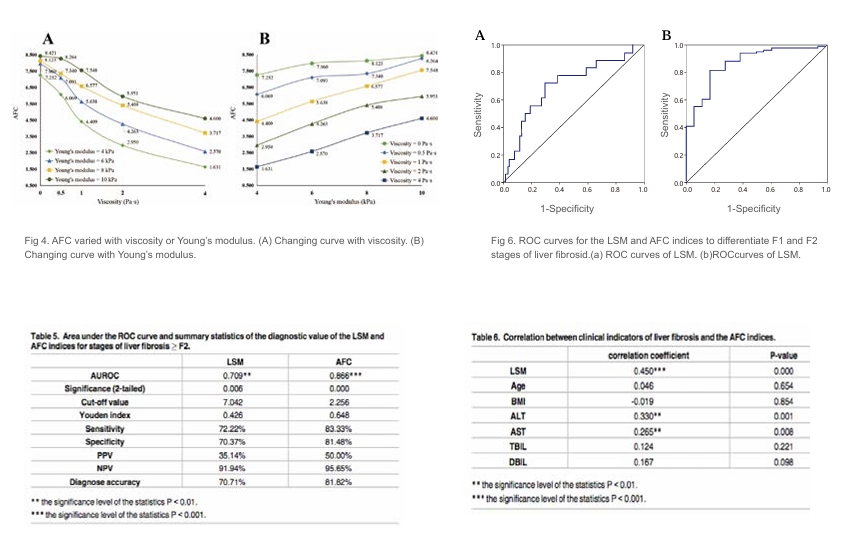
•Improve the quality of early diagnosis of liver fibrosis.
•Developed an idealized two-dimensional axisymmetric finite element model of the liver to evaluate the effects of different viscoelastic values on the propagation characteristics of the shear wave.
•99 patients with chronic hepatitis B infection, undergone biopsy and routine blood tests for staging of liver disease.
•Liver stiffness measurement (LSM) and the shear wave attenuation fitting coefficient (AFC) were calculated from the ultrasound data obtained by performing transient elastography.
•ROC analysis was used to evaluate the reliability and diagnostic accuracy of LSM and AFC.

•Compared to LSM, the AFC provided a higher diagnostic accuracy to differentiate early stages of liver fibrosis, namely F1 and F2 stages, with an overall specificity of 81.48%, sensitivity of 83.33% and diagnostic accuracy of 81.82%.
•AFC was influenced by the level of LSM, ALT. However, there are no correlation between AFC and Age, BMI, TBIL or DBIL.
